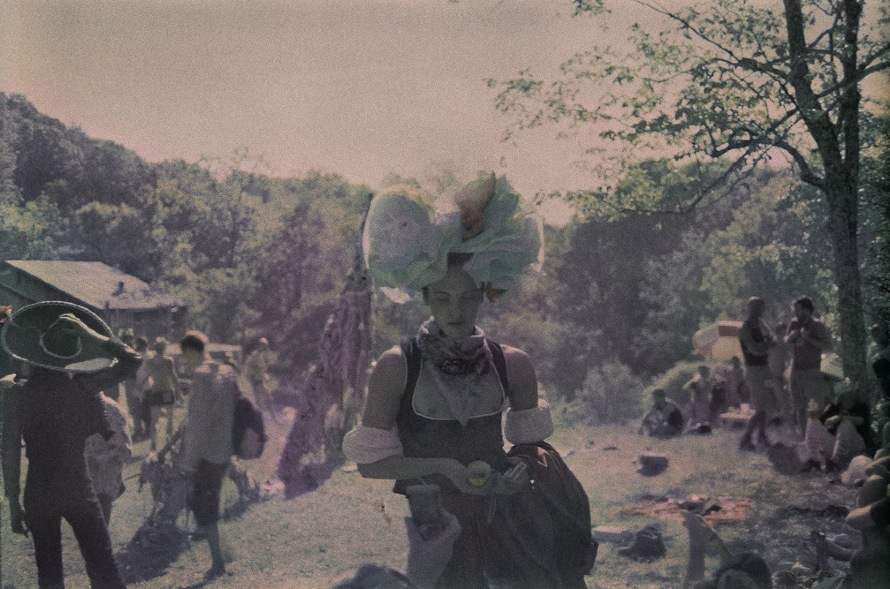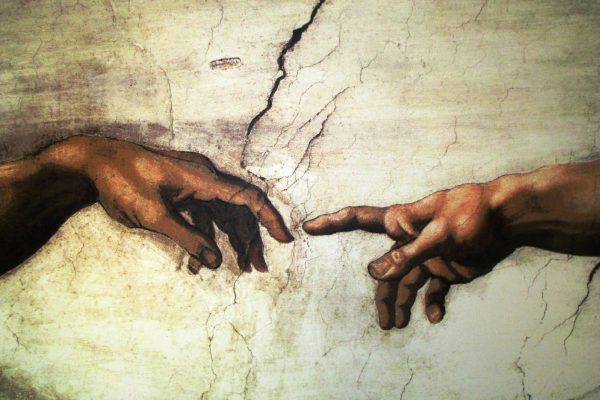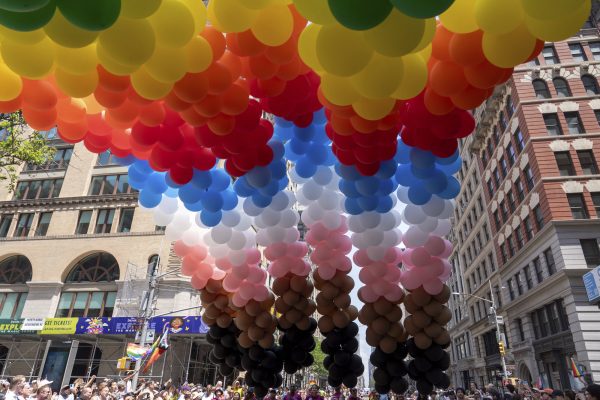Queering the Countryside: New Frontiers in Rural Queer Studies
Edited by Mary L. Gray, Colin R. Johnson, and Brian J. Gilley
New York University Press, $30 (paper)
The queer rights movement has created a plethora of memorable slogans: Silence = Death, Gay Is Good, Out of the Closets and into the Streets. But my favorite is the deceptively mild We Are Everywhere. To homophobes, it evokes horror-movie tropes, half Invasion of the Body Snatchers, half “the call is coming from inside the house.” To queer people, however, it whispers of a community hidden in plain sight, of queerness bursting forth unexpectedly like water from the rock at Rephidim. The political plasticity of “we” makes it the perfect basis for queer organizing, as it evokes a sexuality that is expressed not via particular actions or identities, but solely through solidarity with other queers—yet therein also lies a problem. If the foundation of our organizing requires placing a premium on our sexuality or gender identity as it has been defined by a largely white, urban, bourgeois queer movement, what happens to same-sex loving, gender non-conforming individuals who can’t, don’t, or won’t fit the mold? Are they less queer, or simply less considered? As neighborhoods, nonprofits, and social-justice movements get built by and for those whose primary identification is around a particular vision of queerness, it becomes harder and harder to see the needs, ideas, or very existence of other queers. And because this kind of organization requires aggregation, it tends to happen in cities and lionize urban life, whose sexual skyscrapers cast long, obscuring shadows over the towns and fields of rural queerness.
Indeed many see queer sexuality as inseparable from famous gayborhoods such as New York City’s Greenwich Village, San Francisco’s Castro, and Chicago’s Boystown. In the biomythography of many American queers, the countryside is the place we escape from, the grim before to our urban happily-ever-after. However, this stereotype obscures the fact that many queer Americans, either by chance or by choice, dwell in small towns and rural places. Overlooked by the national gay rights movement and underrepresented in the media, they have rarely been seen as important subjects for scholarship and political representation. And when they are, it is often after some tragedy, such as the murders of Brandon Teena and Matthew Shepard.
For many gay Americans, the countryside is a place we escaped. But what would it mean to consider rural queerness in a positive light?
A new anthology, Queering the Countryside, joins a growing body of literature that seeks to offer a corrective to this metro-chauvinism, turning attention to the daily lives of queer rural Americans. In their introduction, the editors emphasize that “‘rural America’ in neither a monolith nor an apparition.” In particular, they seek to pivot away from the popular sentiments that “rural” always connotes whiteness, conservatism, or cisgender identity; that rural spaces in America are only important in the past, not the present; and that the only healthy, happy way to be gay today is as an out urbanite.
Perhaps it is not surprising, given these lofty ambitions, that Queering the Countryside often falls short, particularly in conveying a rich sense of life as a rural queer person. Too frequently the book emphasizes the conceptual over the actual, the detritus of sexuality over the experience of it, the “theory” over the “queer.” When queer people do appear, they often feel like raw material waiting for a benevolent academic to spin the dross of their lives into golden theory. Largely absent are the lived nuances evocatively captured in recent journalism on, for example, gay and lesbian organic farmers, queer rural communes, and even queer sauerkraut production. One is instead left with a sense of rural queerness that is predominantly inhabited, contrary to the editors’ ambitions, by white, cisgender people. This is hardly surprising, since race and gender identity are two of the shoals that queer thinking has traditionally foundered on, particularly in projects that are not organized by people of color or trans people themselves.
One of the points that Queering the Countryside makes eloquently is that rural queer people tend to emphasize local connections and community as much as, or more than, the intentional communities of far-flung queerness. They may therefore have little that obviously distinguishes them from their neighbors. Many may not wish to be found—a challenge with which Queering the Countryside struggles. One of the most obvious results was a stretching of what constitutes “rural.” For example, one of the volume’s essays focuses on Asheville, North Carolina—a city that by the book’s own definition is not rural. The editors of Queering the Countryside adopt the U.S. Census Bureau’s definition of urban clusters as “cities with populations of at least fifty thousand.” With 87,000 people, Asheville stands well above this threshold. This elision of “Southern” with “rural” highlights how capacious our notions of rural spaces are, and how even experts can be guilty of the romantic tendency to shoehorn whole regions of America into bucolic notions of “the countryside.” As this is one of the few articles that focuses on people of color, this stretching seems intended to diversify the volume, but it is a pyrrhic victory: the book seems more diverse, but “the country” itself is left feeling whiter.
Another essay in the volume, Carly Thomsen’s “In Plain(s) Sight: Rural LGBTQ Women and the Politics of Visibility,” attempts to navigate the intersectional realities of rural queer people of color. Focused on the 2009 dismissal of Air Force sergeant Jene Newsome, it insightfully teases out the tensions between how rural and urban queers situate sexuality within their public identities. Newsome, a black lesbian from rural Pennsylvania stationed in Rapid City, South Dakota, was dismissed from service after military police learned about her marriage to another woman. In the ensuing legal battle, Newsome and her local supporters focused almost entirely on the issue of how the military discovered her marriage—through information illegally passed on by local police—while national LGBT and civil rights organizations dwelled on same-sex marriage rights and the constitutionality of “Don’t Ask, Don’t Tell.”
In her analysis, Thomsen argues that Newsome’s strategy relied on rural values of privacy and protecting your fellow community members, whereas an explicit focus on LGBTQ rights would have required her to differentiate herself from her neighbors. Thomsen persuasively argues that the gay rights movement’s emphasis on identity politics puts rural queers in a difficult—at times untenable—position. She also articulates a critical point about the limitations of a queer politics of visibility, which so often runs roughshod over nuanced matters of intersectionality. Thomson notes, for example, that the media and national LGBTQ organizations, in focusing on Newsome’s lesbianism, problematically avoided any discussion of the role race may have played in the ease of her dismissal, as though drawing attention to this factor would uncouple her from notions of Midwestern wholesomeness and make her a less sympathetic plaintiff. This strategy rendered Newsome’s race unspeakable and reinforced the stereotype that rural America is, by definition, a white space.
• • •
There is a faux-truism in America that LGBT folks do not fare well in the countryside. This is continually reinforced by the media, who only talk about rural queerness in the context of high-profile murders or low-life government officials. Like many of the videos in Dan Savage’s “It Gets Better” project, this suggests that the route to happiness for gay folks leads inexorably away from the countryside. Queering the Countryside seeks to correct this perception, but focuses too strongly on the rural past and what is difficult in modern queer rural life. Without a compensatory focus on what is generative or beautiful, this reinforces the stereotype that queerness and rurality are incompatible.
What would it mean to consider rural queerness in a positive light? A good starting point is to examine actual rural queer organizations and queer rural utopian collectives. (I term them this way to draw attention to the fact that the first emerges from the rural experience and looks toward queerness, while the second is rooted in queerness and dreaming of the countryside.)
In recent years there has been an explosion in rural queer organizing. In August Drake University Law School in Des Moines hosted the Iowa Rural LGBT Summit, the fifteenth such rural queer summit organized by the United States Department of Agriculture in the last two years. Topics of presentations ranged from microloans as a way to support queer rural people to the creation of supportive senior housing and the need for resources for queer migrant farm workers.
Race and gender identity are shoals on which queer organizing has often foundered, especially when people of color and transfolk were not in charge.
Outside of the academic world of university conferences, grassroots organizing is being done by groups such as Southerners on New Ground, a decades-old social justice organization that “envision[s] a multi-issue southern justice movement . . . in which LGBTQ people—poor and working class, immigrant, people of color, rural—take our rightful place as leaders shaping our region’s legacy and future.” Newer projects, such as Rachel Garringer’s Country Queers oral history archive and the film Forbidden: Undocumented and Queer in Rural America, seek to document the lives of rural queer people in their own words. YouTube is also fast becoming its own archive and networking tool for rural queers, providing a place to discuss everything from coming out in rural Virginia, to returning to the Navajo reservation in Crownpoint, New Mexico, to Arkansas’s rural gay radio broadcasts of the 1990s. Paralleling this development, rural projects aimed at general audiences have begun to include queer content, such as the “LGBT In Appalachia” panel series at the 2014 Appalachian Studies Association conference. Such mainstreamed initiatives may ultimately have the greatest success reaching rural queer people, many of whom are unlikely to seek out specifically queer resources and networks.
These projects organize outward from the lived experiences of rural queers. Queer rural utopian projects, on the other hand, take as their starting point a rejection of urbanism—which may or may not be based on actual rural experience. They posit “the rural” as a panacea for the perceived problems of modernity, queer or otherwise: lack of community, loneliness, deracination, environmental devastation, disenchantment. Like similar religious communities in early America, many of these groups are to some degree millenarian, preparing an idyllic and self-reliant life in preparation for an inevitable and fast-approaching apocalypse. Many seek to create queer rural oases that reject dominant American social and sexual structures.
In their early days, these queer rural utopian groups were often, and perhaps ironically, gender-essentializing, with lesbians creating wymyn’s land collectives around the country, and gay men flocking to “faggot-only” Radical Faerie gatherings organized by communist luminary Harry Hay. The degree to which transfolk were welcome in these spaces varied from group to group, as was true for people of color as well—much like in the rest of the organized, mainstream lesbian and gay movements of the era.
But though the countryside is often derided as a place where change comes slowly or not at all, queer rural utopianism has rapidly evolved from these roots. Today collectives such as Sojourners Land celebrate “Black Queer and Transgender Women,” while a recent issue of the Radical Faerie Digest explored queer radical utopianism through the perspective of queers with disabilities. Although the popularity of such projects is hard to quantify, a quick search for the word “queer” in the directory of the Fellowship for Intentional Community brings up a whole host of other communes created by or embracing of queers.
The final chapter of Queering the Countryside touches on queer rural utopianism, but does so by foregrounding theoretical interests in “queer temporality” and how queer rural communes express “the materiality of time.” The result prizes speculation about queer rural people over insight from them, creating a sense of distance and superiority. Actual queer rural people seem always somehow outside the grasp of Queering the Countryside. In their introduction, the editors are rightly critical of gauzy, hagiographic projects that content themselves with “proving that same-sex sexual behavior and gender nonconformity happens” in rural places. Their frame is bigger, their goals nobler. They want not just to show that we are everywhere, but to show how that “we” is constructed, and who is left out. But from such a great height, the countryside and its people blend into familiarly indistinct fields.








